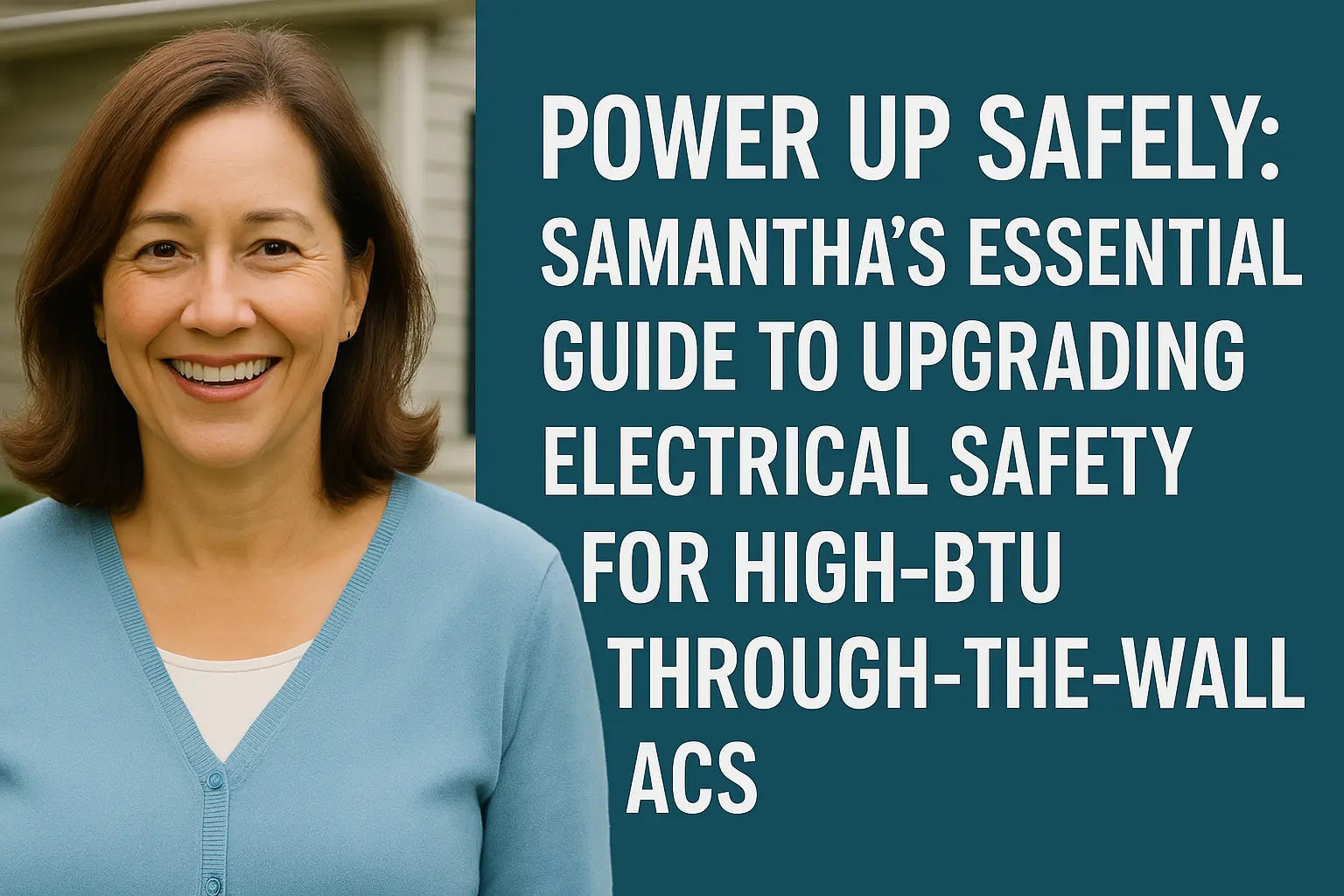💁 Samantha Here!
Hey hey, it’s Samantha — your favorite home-comfort nerd — and today we’re going electrical! ⚡ Trust me, I know that wires and breakers can feel intimidating. But if you’re planning to install one of those big, beefy through-the-wall ACs with serious BTUs, your electrical setup is one thing you cannot afford to overlook.
Why? Because most standard outlets and circuits just can’t safely power these units. Push them too hard, and you could trip breakers all day or, worse, create a serious safety hazard like overheating or even fire. 😱 That’s not the kind of summer heat anyone needs!
But don’t sweat it (pun intended) — you’ve got me. In this guide, I’ll walk you through exactly what you need to know to upgrade your electrical safety before that high-BTU beauty goes into your wall. From figuring out if you need a dedicated circuit to grounding properly and choosing the right outlets and breakers, I’m here to make sure you do this right.
We’ll also sprinkle in some links to trusted pros and top-notch resources along the way so you can go deeper if you’d like. Ready? Time to power up — safely! 🔐⚡
1️⃣ Why High-BTU Units Need Special Electrical Considerations
Before diving into wires and breakers, let’s look at why this is a big deal. High-BTU units (typically anything over 10,000–12,000 BTUs) draw serious amps. Without the right electrical support, you risk:
✅ Overloaded circuits and constant breaker trips
✅ Voltage drops that decrease your AC’s efficiency
✅ Fire hazards from overheated wires and connections
That’s why the National Electrical Code (NEC) requires dedicated circuits for larger appliances. Check out the U.S. Department of Energy’s page on electrical safety basics to brush up on safe practices before you ever touch a wire.
2️⃣ Step 1: Verify Your AC’s Electrical Requirements
Your AC unit’s spec sheet will list its amperage, recommended circuit size, and plug type — usually 115V or 230V. Here’s a quick cheat sheet:
💡 115V units: Often up to 12,000 BTUs; require a dedicated 15- or 20-amp circuit.
💡 230V units: 12,000+ BTUs; often require a dedicated 20- to 30-amp circuit.
If you want a good explainer on AC amperage basics, The Spruce has a super easy read on what BTUs and amps mean.
3️⃣ Step 2: Installing a Dedicated Circuit
A dedicated circuit means one appliance per breaker — zero sharing. Why? Safety and efficiency. Installing a new one involves:
⚡ Running the proper gauge cable
⚡ Installing the right amperage breaker at the panel
⚡ Adding a correctly rated outlet close to your AC’s install location
For most DIYers, this is where I say — unless you’re super confident — call a licensed electrician. The pros at This Old House give an awesome overview of dedicated appliance circuits and why they matter.
4️⃣ Step 3: Upgrade Breakers & Wiring
If you’re lucky, your existing panel might have an empty slot and capacity to add a new breaker.
If not, you may need an electrical panel upgrade — which is definitely a pro-only job.
Ensure that all wiring matches the required gauge. Too small? Risk of overheating. Too large? You’ll pay more than needed without any benefit.
Always check the NEC guidelines. The NEC’s own code overview on electrical safety is a bit technical, but it’s what your electrician will follow.
5️⃣ Step 4: Grounding & Surge Protection
Grounding protects you (and your appliance) from stray currents or short circuits. Confirm that your new outlet is properly grounded — especially if you’re converting an older two-prong setup.
And don’t forget surge protection! High-BTU ACs have delicate electronics that can fry during a power surge. Installing a whole-home surge protector is smart insurance.
If you want a deeper dive into surge protectors, CNET’s article on best surge protectors for appliances is a great read.
6️⃣ Step 5: Test & Label
Once wired up, test the outlet with a multimeter or inexpensive outlet tester before plugging in your unit.
And don’t forget to label your new breaker at the panel — future you (or whoever comes after you) will thank you.
🧠 Samantha’s Goodbye
And that’s a wrap on the “electrifying” part of your through-the-wall AC adventure! 🎬⚡ With a dedicated circuit, properly sized breaker, grounded outlet, and surge protection, you can keep your new AC humming happily — and safely — for years.
If all this still feels a bit overwhelming, don’t hesitate to call a pro. Remember: no AC is worth a safety risk. Invest in the electrical side just like you do the unit itself. And when you’re ready to pick that perfect high-BTU AC for your newly prepped wall, swing by The Furnace Outlet’s through-the-wall AC collection — they’ve got options for every need and every budget.
Need some seasonal maintenance tips for your through-the-wall AC? Visit my guide: Cool All Year.
Thanks for chilling with me, friends — stay cool, stay safe, and until next time, Samantha is signing off with an extra-big high-five and a frosty drink! 🍹💖
- Samantha, Home Comfort Advisor







